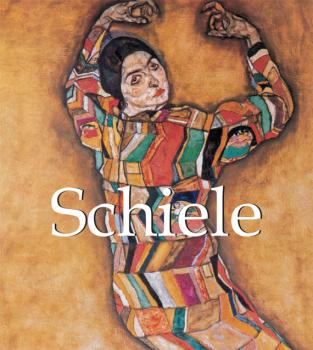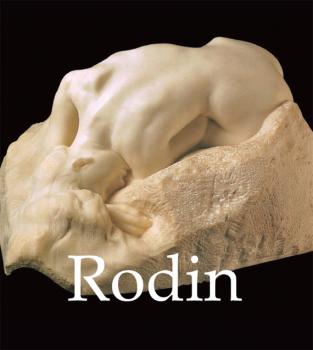Confidential Concepts, Inc.
Все книги издательства Confidential Concepts, Inc.Van Gogh
Vincent van Gogh’s life and work are so intertwined that it is hardly possible to observe one without thinking of the other. Van Gogh has indeed become the incarnation of the suffering, misunderstood martyr of modern art, the emblem of the artist as an outsider. An article, published in 1890, gave details about van Gogh’s illness. The author of the article saw the painter as “a terrible and demented genius, often sublime, sometimes grotesque, always at the brink of the pathological.” Very little is known about Vincent’s childhood. At the age of eleven he had to leave “the human nest”, as he called it himself, for various boarding schools. The first portrait shows us van Gogh as an earnest nineteen year old. At that time he had already been at work for three years in The Hague and, later, in London in the gallery Goupil & Co. In 1874 his love for Ursula Loyer ended in disaster and a year later he was transferred to Paris, against his will. After a particularly heated argument during Christmas holidays in 1881, his father, a pastor, ordered Vincent to leave. With this final break, he abandoned his family name and signed his canvases simply “Vincent”. He left for Paris and never returned to Holland. In Paris he came to know Paul Gauguin, whose paintings he greatly admired. The self-portrait was the main subject of Vincent’s work from 1886c88. In February 1888 Vincent left Paris for Arles and tried to persuade Gauguin to join him. The months of waiting for Gauguin were the most productive time in van Gogh’s life. He wanted to show his friend as many pictures as possible and decorate the Yellow House. But Gauguin did not share his views on art and finally returned to Paris. On 7 January, 1889, fourteen days after his famous self-mutilation, Vincent left the hospital where he was convalescing. Although he hoped to recover from and to forget his madness, but he actually came back twice more in the same year. During his last stay in hospital, Vincent painted landscapes in which he recreated the world of his childhood. It is said that Vincent van Gogh shot himself in the side in a field but decided to return to the inn and went to bed. The landlord informed Dr Gachet and his brother Theo, who described the last moments of his life which ended on 29 July, 1890: “I wanted to die. While I was sitting next to him promising that we would try to heal him. […], he answered, ‘La tristesse durera toujours (The sadness will last forever).’”
Turner
At fifteen, Turner was already exhibiting View of Lambeth. He soon acquired the reputation of an immensely clever watercolourist. A disciple of Girtin and Cozens, he showed in his choice and presentation of theme a picturesque imagination which seemed to mark him out for a brilliant career as an illustrator. He travelled, first in his native land and then on several occasions in France, the Rhine Valley, Switzerland and Italy. He soon began to look beyond illustration. However, even in works in which we are tempted to see only picturesque imagination, there appears his dominant and guiding ideal of lyric landscape. His choice of a single master from the past is an eloquent witness for he studied profoundly such canvases of Claude as he could find in England, copying and imitating them with a marvellous degree of perfection. His cult for the great painter never failed. He desired his Sun Rising through Vapour and Dido Building Carthage to be placed in the National Gallery side by side with two of Claude’s masterpieces. And, there, we may still see them and judge how legitimate was this proud and splendid homage. It was only in 1819 that Turner went to Italy, to go again in 1829 and 1840. Certainly Turner experienced emotions and found subjects for reverie which he later translated in terms of his own genius into symphonies of light and colour. Ardour is tempered with melancholy, as shadow strives with light. Melancholy, even as it appears in the enigmatic and profound creation of Albrecht Dürer, finds no home in Turner’s protean fairyland – what place could it have in a cosmic dream? Humanity does not appear there, except perhaps as stage characters at whom we hardly glance. Turner’s pictures fascinate us and yet we think of nothing precise, nothing human, only unforgettable colours and phantoms that lay hold on our imaginations. Humanity really only inspires him when linked with the idea of death – a strange death, more a lyrical dissolution – like the finale of an opera.
Tiffany
A jeweler with an established reputation through the world, Louis Comfort Tiffany was the spearhead of the Art Nouveau movement in the United States. At a time and in a country in perpetual growth, Tiffany succeeded in elevating the decorative to the rank of fine art. Glass was the field of expertise of Tiffany’s workshops. There they developed groundbreaking techniques of treatment which produced beautiful effects on glass. Following the examples of Gallé or Daum, Tiffany made the most of this material: playing with colors, opaqueness and transparency… However, his most famous success is his lamps in mosaic of glass, similar to the cathedral’s stained glass window. Diving into this prism of colors, the author makes us dream again of the birth of this enduring company.
Still Life
Cézanne transformed a teacup into something alive, raising still-life to the point that it ceased to be inanimate. Wassily Kandinsky said about the French artist: “He painted these things as human beings because he was endowed with the gift of divining the inner life in everything.” In addition to those of Cézanne, this book is devoted to still-life paintings by artists such as Van Gogh, Matisse, Chardin and Picasso.
Shoes
Mega Square Shoes focuses on the history of the shoe and elevates the shoe to the rank of a work of art. The author is a leading expert on the subject and curator of France‘s Shoe Museum, which holds the greatest shoe collection in the world, with 12,000 specimens.
Sculpture
Mega Square Sculpture spans over 23,000 years and over 120 examples of the most beautiful sculptures in the world: from prehistoric art and Egyptian statues to the works of Michelangelo, Henry Moore and Niki de Saint-Phalle. It illuminates the wide variety of materials used and the evolution of styles over centuries, as well as the peculiarities of the most important sculptors.
Schiele
Egon Schiele’s work is so distinctive that it resists categorisation. Admitted to the Vienna Academy of Fine Arts at just sixteen, he was an extraordinarily precocious artist, whose consummate skill in the manipulation of line, above all, lent a taut expressivity to all his work. Profoundly convinced of his own significance as an artist, Schiele achieved more in his abruptly curtailed youth than many other artists achieved in a full lifetime. His roots were in the Jugendstil of the Viennese Secession movement. Like a whole generation, he came under the overwhelming influence of Vienna’s most charismatic and celebrated artist, Gustav Klimt. In turn, Klimt recognised Schiele’s outstanding talent and supported the young artist, who within just a couple of years, was already breaking away from his mentor’s decorative sensuality. Beginning with an intense period of creativity around 1910, Schiele embarked on an unflinching exposé of the human form – not the least his own – so penetrating that it is clear he was examining an anatomy more psychological, spiritual and emotional than physical. He painted many townscapes, landscapes, formal portraits and allegorical subjects, but it was his extremely candid works on paper, which are sometimes overtly erotic, together with his penchant for using under-age models that made Schiele vulnerable to censorious morality. In 1912, he was imprisoned on suspicion of a series of offences including kidnapping, rape and public immorality. The most serious charges (all but that of public immorality) were dropped, but Schiele spent around three despairing weeks in prison. Expressionist circles in Germany gave a lukewarm reception to Schiele’s work. His compatriot, Kokoschka, fared much better there. While he admired the Munich artists of Der Blaue Reiter, for example, they rebuffed him. Later, during the First World War, his work became better known and in 1916 he was featured in an issue of the left-wing, Berlin-based Expressionist magazine Die Aktion. Schiele was an acquired taste. From an early stage he was regarded as a genius. This won him the support of a small group of long-suffering collectors and admirers but, nonetheless, for several years of his life his finances were precarious. He was often in debt and sometimes he was forced to use cheap materials, painting on brown wrapping paper or cardboard instead of artists’ paper or canvas. It was only in 1918 that he enjoyed his first substantial public success in Vienna. Tragically, a short time later, he and his wife Edith were struck down by the massive influenza epidemic of 1918 that had just killed Klimt and millions of other victims, and they died within days of one another. Schiele was just twenty-eight years old.
Sargent
Sargent was born in Florence, in 1856, the son of cultivated parents. When Sargent entered the school of Carolus-Duran he attained much more than the average pupils. His father was a retired Massachusetts gentleman, having practised medicine in Philadelphia. Sargent’s home life was penetrated with refinement, and outside it were the beautiful influences of Florence, combining the charms of sky and hills with the wonders of art in the galleries and the opportunities of an intellectual and artistic society. Accordingly, when Sargent arrived in Paris, he was not only a skilful draughtsman and painter as a result of his study of the Italian masters, but he also had a refined and cultivated taste, which perhaps had an even greater influence upon his career. Later in Spain, it was chiefly upon the lessons learned from Velázquez that he found his own brilliant method. Sargent belongs to America, but is claimed by others as a citizen of the world, or a cosmopolitan. Sargent, with the exception of a few months at distant intervals, spent his life abroad. The artistic influences which affected him were those of Europe. Yet his Americanism may be detected in his extraordinary facility to absorb impressions, in the individuality he evolved, and in the subtlety and reserve of his methods – qualities that are characteristic of the best American art.
Roses
Mega Square Roses presents the large number of different species of this unique flower, which is charged with so many feelings and imbued with powerful cultural significance. Because of the rose’s botanical as well as artistic value, this book features a popular subject for art lovers as well as for people who enjoy the beauty and versatility of flowers. Each of the colourful and detailed illustrations is completed with the aid of valuable scientific information.
Rodin
Influenced by the masters of Antiquity, the genius of Michelangelo and Baroque sculpture, particularly of Bernini, Auguste Rodin (1840-1917) is one of the most renowned artists in history. Though Rodin is considered a founder of modern sculpture, he did not set out to critique past classical traditions. Many of his sculptures were criticised and considered controversial because of their sensuality or hyperrealist qualities. His most original works departed from traditional themes of mythology and allegory, and embraced the human body, celebrating individualism and physicality. This book uncovers the life and career of this highly acclaimed artist by exploring his most famous works of art, such as the Gates of Hell, The Thinker and the infamous The Kiss.









